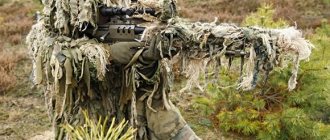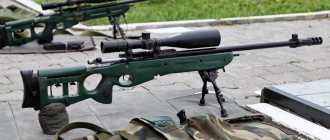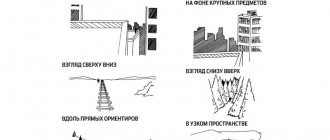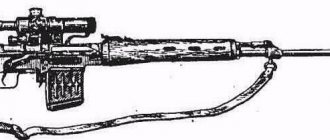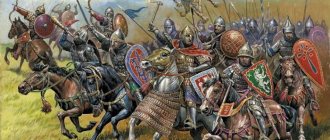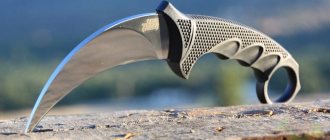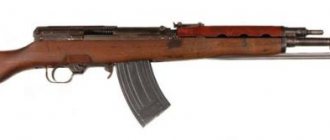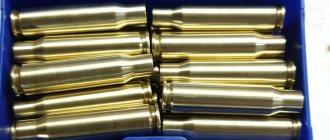Weapon
Weapons are the most important element of a sniper’s equipment, the choice of which must be approached very carefully. In many ways, the safety and success of a sniper in battle will depend on the correct choice of weapon. First of all, you should decide on the prototype of the weapon and, accordingly, its airsoft copy, if you are not focused on the original. If you don’t know which weapon is best to choose, the airsoft-rus online store offers a wide selection of spring, gas and AEG weapons, among which any sniper can find a decent, high-quality and multifunctional one. Our managers are always ready to listen to your wishes and help with your choice.
Camouflage suit
The second most important element of a sniper’s equipment will be a camouflage suit, which helps hide the fighter’s silhouette in the surrounding area. A sniper's disguise can be either a suit, which consists of separate parts (pants and a jacket with a hood), or a continuous camouflage suit. The color of the camouflage suit should be selected taking into account the time of year, territory and vegetation in the area.
Unloading vest
Another important element of a sniper’s equipment in airsoft is the unloading vest, or, as it is also called, the unloading vest. The main purpose of unloading is to evenly distribute the considerable weight of the equipment so that the sniper can move comfortably. The front of the unloading vest should not have any clothing parts or loops that could get caught when moving on your belly.
As a rule, such a vest consists of two wide shoulder straps, which widen towards the bottom and are attached to the waist belt. On the shoulders and waist there are fixed pouches for a first aid kit, magazines, knives, flasks, spare weapons and other items of equipment. Unloading can replace a backpack and provide faster and more convenient movement. Plus, the inside of the unloading vest is often lined with elastic plates designed for thermal and waterproofing, which allows you to move over rocks with minimal discomfort.
Sniper saboteur's luggage
The number of weapons and things that a sniper-saboteur takes on a raid is very varied.
There are at least a couple of short-barreled weapons, several knives, spare optics, rope and much more. But let's look in more detail at what exactly is required for a shooter operating in isolation from the main troops, the so-called free hunt, when separation distances from the main forces are up to one hundred kilometers and last more than a week, and the sniper also becomes a scout. These hunters work in pairs. Their task is to find and destroy the highest priority living target in their hunting area. A good sniper can alter or make any equipment seventy to eighty percent on his own, because sniping is not just a profession - it is a lifestyle, and an easy path to death. A backup weapon for a sniper is the last hope for salvation if detected. Only in films does a shooter with a large-caliber rifle shoot back at a special forces company. Nowadays, there is no need to make a frontal attack on a sniper and come under his fire. It’s enough just to send the approximate coordinates of the shooter to a battery of rocket-propelled grenade launchers, and that’s it.
write letters to the next world. Therefore, a spare weapon is taken into account for a battle within twenty to thirty meters. Basically it is a small pistol with a small caliber silencer (up to nine millimeters) for covert work at extremely short distances and a powerful short barrel. As funny as it may seem, these are often very large-caliber revolvers with an elongated barrel (I would like to note that in our army the choice of weapons for a sniper is very small, these are PB or APB, and only anti-terrorist units and the GRU can boast of their arsenals and permission to freely choose a barrel for surgery). Although such giants are not rapid-fire, they have high accuracy and a strong stopping effect, incapacitating a fighter even in heavy body armor. As for noise, stealth in the event of a fight at distances accessible to these monsters will no longer be important, and a good shooter from a .45 caliber revolver is able to shoot a drum in seven seconds, while knocking out sixty to seventy points out of a hundred, you must agree, this is very not bad for a hand howitzer. If we take into account the high reliability and the ability to avoid misfires, then it is just right for the harsh conditions of a long-distance raid. The ammunition is basically minimal for a quick battle (the sniper’s main weapon is his stealth and cunning), it is better to take more anti-personnel mines and grenades, but more on that later.
The most interesting place in a sniper’s weaponry is occupied by a knife; it is not only a weapon for a covert attack, but also a universal tool. As the main knife, they take something with a trick, for example, HP. This knife is excellent for hand-to-hand combat as a cutting and piercing weapon, but is not suitable for a covert attack. To remove a sentry, you need a knife with the narrowest and thinnest blade possible. Only inexperienced fighters cut the throat of a sentry, since such “work” leaves a lot of blood, which can give away the attack. Specialists also have a kind of “combat etiquette”, because every professional understands that he himself may be in the place of the “removed” sentry, and then it is better to die quickly and without suffering. A blow to the body with a simple knife may be ineffective, since modern body armor has a layer of Kevlar or other polymer that holds the blow of a cutting weapon. However, a narrow blade with a sharp end simply pushes the threads of protection apart with a sufficiently strong blow, and it also passes between the plates much better than a regular knife. A universal knife, built according to the “Swiss” pattern, is also required, which will contain all the necessary tools, from wire cutters to a small drill. This set will always help you set a mine and open canned food.
The correct placement of things on the shooter’s body also plays an important role. Usually the weight of the equipment is quite large and they do not take it completely with them during operations, leaving it in caches. You should always carry everything you need with you, the rest should be packed in a RD or a backpack, because suddenly you have to leave your backpack with all your things and move on, or it will be lost during the transition. To make wearing all this stuff more comfortable, they came up with an unloading vest, only it is seriously different from ordinary “vests” and is sewn to order. The first difference is that there is nothing on the chest and stomach at all; it should be a smooth surface, without loops or protrusions that could get caught on any protrusion while crawling and prevent the shooter from moving forward. The inside of this vest is lined with thermal and waterproofing and has elastic plates similar to silicone pillows, which will allow you to lie comfortably even on sharp stones.
The equipment location is as follows:
Right shoulder - a coil of thin cord Right bicep - empty (in order to avoid interference when throwing the rifle to the shoulder) Right wrist to the elbow - compartments for magazines of the main pistol Right armpit - a knife in a hidden sheath (located with the handle down) Right on the belt - empty ( so as not to interfere with the elbow when aiming from a rifle while standing) On the right behind the back is a mini sapper blade. Right thigh is the main weapon. Left shoulder is a dressing package, painkillers. Left biceps – lantern, lighter. Left wrist – GPS Left armpit – spare pistol Left on the belt – pyrotechnic kit, first aid kit Left rear – coil of sling and carabiners, can of spray against dogs and other wild animals (scares off and throws off the trail) Left hip – spare pistol magazines, bag with booby traps. Behind his back is a camouflage blanket, a pouch with rations and ammunition for a rifle. It is this arrangement of equipment and weapons that is most effective for covert movement while crawling and fighting while lying on the ground.
Observation devices
For a sniper, surveillance devices play a very important role - periscope and binoculars, thermal imagers and night vision devices. Binoculars, as a method of observation, are not used in all combat operations. For example, with a counter-sniper, binoculars can play a cruel joke, making the observer easy prey for the enemy. The safest means of observation during a counter-sniper operation remains the periscope, which makes it possible to inspect the territory 360 degrees without having to turn your head. The periscope reticle allows you to set the distance to the target.
At night, thermal imagers and NVGs (night vision devices) will be indispensable assistants for the sniper for surveillance. The difference between these devices is that NVDs improve image quality at dusk. A thermal imager, in turn, is more interesting: it detects the thermal infrared radiation of an object, in a few seconds the matrix of the device creates a thermogram, turning it into electrical impulses, after which it transmits the modified image to the display. Thermal imagers are capable of detecting an object at a distance of 300 meters.
Sniper outfit. Experience of a Group A veteran.
FSB reserve lieutenant colonel Vasily Nikolaevich Denisov served for nineteen years as a sniper in the best Russian anti-terror unit - Group “A”.
19 years... An “ordinary” sniper doesn’t live that long, only a Master. And that's not always the case. Because any anti-terror sniper is ready to give his life for other people at any second. Of these 19 years, many days and months passed in three. Afghanistan, Budennovsk, Pervomaiskoye. These are just some of the “marks” in the troubled memory of the Alpha veteran. Dozens of combat operations, where he repeatedly served as commander of a group of snipers. Hundreds of people were saved with his participation. The third toast, which he drinks silently and without clinking his glasses. For the guys who are no longer there. His favorite video cassette, where they are still smiling, alive
Let's listen to the stories and advice of “Uncle Vasya”. They have a special price.
What can you say about the profession of an anti-terror sniper in a nutshell? Stealthily move to a convenient position. Be invisible and observe, collect information. A sniper is first and foremost a scout. be ready, if commanded, to immediately use weapons. Calculate in advance how the bullet will travel to prevent the hostages from being hit. A shot at a terrorist must be surgically precise.
In any operation, equipment and camouflage play a vital role among other factors for a sniper. Let me give you an example from practice. In the summer of 1994, four terrorists seized a bus with hostages at the Mineralnye Vody airport. It was necessary to free people.
When group “A” arrived there, it was evening. I went up to the roof of the terminal to select places for sniper positions. The bus was on the square in front of the airport building. He hardly stood still and periodically moved in a circle to make it difficult to access. The windows are curtained, except for the windshield. Only the driver and the terrorist controlling him were visible.
It would have been more convenient for us to move into position at night, but the snipers did not receive such a command. At night, the terrorists demanded that they be accompanied by a police car with the lights on. They were afraid that special forces would approach in the dark. So they drove in a circle - in front was a bus, behind was a car that illuminated the approaches.
We only received the order to move in the morning. Three sniper pairs worked. One moved into a green area with low bushes around the perimeter. Just what you need for camouflage. Another couple took up positions on almost level ground in the grass. It was more difficult for them, but they did everything professionally.
The third is our couple, on the other side of the square. I must say that due to the delay at headquarters, all of us snipers had a hard time. I repeat - it was morning.
We crawled “in a layer” almost in full view of the terrorists, several tens of meters from them. At night, occupying positions would have passed without problems, but here it’s clear. Our nomination was not noted - I think there is no need to explain why, because the work was done by professionals. However, it took two hours to crawl...
I was in a sniper suit of the “Leshy” type, made with my own hands. I blended in well with the unmown grass. I crawled four hundred meters. Got there. Completely open place, no bushes. Just a big lawn covered with grass. In this situation, it was necessary to lie further away, in the depths, but it was advisable for me to get as close as possible to the edge of the area so that the view would be better. I look - small clumps of grass are scattered here and there, and one is very convenient, right on the border of the site where the bus is located. Not tall, about half a meter high. He crawled up and “buried” his head and shoulders into it. I had two stops with me - these are ordinary stainless steel arches, elastic. With them he lifted the edge of the shock in front of him. It turned out to be a good embrasure.
Thus, the top is covered with a mop, and the body is completely merged with the terrain thanks to the “Leshy”. It turned out very well. Everything was visible through the optics without interference. Ready to conduct effective fire at any second. The distance to the bus was from 30 to 50 meters, no more: the distance varied, and it moved in a circle periodically.
We observe and report the results via communication.
I lay there for five hours, barely moving. I’m almost under the terrorists’ noses, and before that they warned: “If we see the slightest advance, we’ll open fire to kill.” So I had to “become grass.” Meanwhile, the heat was thirty-five degrees, maybe more.
Finally, they were given a helicopter directly to the square. Standing ready for takeoff. The bus makes two circles for control. This time he drove at a distance of five meters from me. I was lying so close to the edge that the trunk was sticking out onto the concrete. At that moment I had to put it away under myself so as not to be noticed.
Then an interesting situation arose. So the bus stops. The turntable is about ten meters away. One terrorist in a mask came out, examined the inside of the helicopter, carefully looked around, then sat down on the steps of the side stairs. Automatic on my knees. He sits and waits for the others. The first couple gets off the bus - a terrorist and a hostage handcuffed to him. Behind them is the second couple, also chained. They go to the helicopter. A fourth terrorist appeared at the door of the bus. He insures, holding a machine gun.
At that moment, all four of them found themselves in full view of our sniper pair. I'm wondering how to proceed. Agree to communicate with your partner. who takes what target, and hit the two most dangerous terrorists first. The one on the stairs, and the second one at the door of the bus, since they have weapons in their hands. Then immediately shoot at two other terrorists who are with hostages. The machine guns are dangling from their necks. each one is dragging a trunk in one hand, and the other is chained to the hostage. They won’t have time to react, that’s for sure. We were armed with screw cutters. That is, after the first two silent shots, when the first two terrorists are hit, a couple of others, without even having time to understand what’s going on, will immediately be overwhelmed by repeated shots. The bullets are heavy, 16 grams, and hit immediately and reliably. Shoot only in the head, as the criminals are wearing bulletproof vests (were issued upon request). The distance is optimal for 100% target destruction. Here's the diagram. Everything will take my partner and I no more than 2-3 seconds. I report by radio to headquarters that there is a real opportunity for our couple to use weapons.
However, for some reason the command to kill was not received. I think we were not allowed to shoot because the other two sniper pairs could not use their weapons; their sectors were closed by a bus at that moment. Apparently, the leadership was afraid that the two of us wouldn’t be able to hit the four of us.
Today, replaying that moment in my memory, I am sure that we would have killed them all, but I think there was a reason in the actions of the leadership. Perhaps the headquarters decided to avoid even the slightest risk, because the criminals did not take hostages with them, as agreed.
They flew away on their own, with money and weapons. Only the crew was left hostage, but they were left alone as soon as the helicopter landed in Chechnya. The terrorists fled, and then it took a lot of time to find them. But in the end, all four were neutralized.
Yes, at the end of the operation in Mineralnye Vody there was one funny moment. When the helicopter took off, television crews were allowed into the square. They were filming a helicopter flying away ten meters from me. And then the command comes over the radio - the snipers can shoot. We stand in different places, like jacks in a snuff box. The cameraman was in shock and almost dropped the camera on the concrete. You can understand that some shaggy people, or ghosts, suddenly appear from the grass...
SNIPER EQUIPMENT AND CAMOURING
After the above example, there is no point in proving the fact that any mistake or inaccuracy of the sniper in choosing a position, camouflage, etc. may lead to irreversible consequences. Let me also remind you that I had to lie in position for several hours in the heat, with virtually no movement. This, you understand, places certain demands not only on the psychological stability of the sniper, but also on his clothing. Let's move on to specifics.
sniper suits can be purchased in stores, but if this is not possible, you can make one yourself. It won't be worse, eh. maybe, maybe even better. Need to know some have flown.
On a light camouflage jacket of a large size, rubber loops are sewn on (approximately in a checkerboard pattern and quite often. Long (up to 60 cm) strips of camouflage fabric and burlap are woven into them. They change depending on the environment in which the sniper needs to operate (bright green, withered, autumn yellow, etc.) Changing camouflage ribbons of different colors depending on the conditions of the task, I always used strips of burlap without coloring, since their weaves create natural color tones.
The ratio is approximately 80% camouflage stripes and 20% burlap stripes. Rubber cells for attaching them are sewn onto the back, hood (it must be sewn on) and sleeves. For obvious reasons, cells on the chest and legs are not needed. The costume should blur the outlines of the human body, colors should be selected strictly to the background of the environment. Weaves of grass and branches can be used, but for a short time, as they dry out and lose color. In Budennovsk, where we had to work for several days, we hardly used natural greenery.
About the thermos effect. He learned these basics as a lieutenant, when he worked as a sniper in Group A in Afghanistan. The best insulation is still air, and the best way to trap it is to wear layers of clothing. An example is the warm robes worn by men in Central Asia. At temperatures above 35 degrees they feel excellent, and at sub-zero temperatures the same robe saves them from the cold. The layer of air between the underwear and the robe acts on the principle of a thermos.
Camouflage for the winter period is, naturally, a camouflage coat several sizes larger. You need gauze to curtain the shelter canopy. Everything is visible through the gauze, but he himself is invisible against the background of snow, there is no glare from the sight. The snow before the position must be sprinkled with water to form an icy crust. The barrel of a rifle is bandaged; anything that cannot be bandaged is covered with a white plaster
Summer equipment has its own subtleties. I have already mentioned “Leshem”. Here is another option, based on the conditions of the operation. When it was hot, I wore underwear, the thinnest, made from Polartek fabric. The fact is that, thanks to its “breathing” properties, you don’t sweat in it, which means that clouds of all kinds of blood-sucking insects don’t hover around you. On top, directly over this underwear, I put on a GZS (special protective suit), it is a camouflage-colored mesh. So overall the ventilation is excellent. Comfortable.
I thoroughly treated my face, hands and clothes with repellent (when choosing a place to lie down, you should always look to see if there are any anthills, nests of wasps or hornets in the trees nearby, otherwise it will simply be impossible to lie down. The most effective repellents, in my opinion, are dimethyl phthylate, dimethyl toluamide, benzimine, and they cost pennies. They protect from insects for 2 to 5 hours. The consumption of DET on outer clothing was usually up to 250 grams. All these are not trifles when you often have to stay in position for 10 hours or more. There were cases when our snipers spent more than 40 hours waiting in positions.
And a little more about camouflage. In principle, many professional snipers know. what a folding frame is, but according to my observations, not everyone uses this device, and some even have no idea about it. This is understandable, because the frame is not produced by our industry, like many other elements of equipment necessary for a sniper. Therefore, it is made independently. When going out, a reconnaissance sniper must have it with him, in my opinion, (complete with a waterproof poncho or at least a regular raincoat).
I made it from long narrow plates, bent in the shape of an “G” and similar to a boomerang. Up to approximately 16 plates are used. Their main part is long, the curved part is short
The material is stainless steel, it is light, flexible and durable. The plates should be flat to make them easier to hold together and more convenient to carry. The length of each is the same and is about 80 cm. The plates are fastened according to the fan principle. When folded, it does not take up much space, is light in weight and is attached to a backpack. When unfolded, it covers a hole opened for the position with a diameter of about 1 m 60 cm (based on the length of the “boomerangs”). This creates a “roof” frame on which a waterproof poncho is placed. From above, all this is carefully disguised as the background of the area.
Thus, the sniper, being camouflaged, is completely protected from precipitation and wind and can remain in position for a long time, observing the terrain through the embrasure.
Sniper shoes are a special conversation. A proven Western example of tourist or army boots in black or brown is preferred. In winter I wore French high-top Gore-Tex boots - not army boots, but mountain boots, designed for climbers. Great shoes. Lightweight, soft, retains heat well, as the inside is lined with Polartek. The foot does not sweat because the inner and outer fabrics “breathe”, while the boots are waterproof. It was also convenient for me that the kit included titanium spikes, which, if necessary, could be screwed into the sole with a special screw. My foot didn't slide on the ice. In the summer and off-season I used French special forces boots. These are soft leather boots that hold the foot well, with a flexible and durable rubber sole. Weighs no more than sneakers. Completely waterproof. I also liked the fact that on the top there were pockets into which additional magazines for the pistol could be stored. These boots are versatile. In them I had to fight in the forest, in the mountains and on the plain. One pair lasted me eight years.
I can also recommend using nylon gaiters. If you have to go out in bad weather (rain, mud), they need to be pulled over the top of your shoes. Simply take regular women's nylon stockings and put them on your boots. Your shoes will be well protected from moisture. In addition, it is easier to move through impassable mud - it easily slides off the nylon and does not stick.
WHAT A SNIPER NEEDS IN A COMBAT OPERATION
High-ranking managers are far from the needs of the average sniper. Many of them consider the presence of a rifle with optics, camouflage clothing and ammunition sufficient to complete the task. In practice, this is not the case. Let's try to briefly summarize what a sniper needs in a combat operation (on average, since the elements of equipment change depending on the task.
Portable radio communication. During a counter-terrorist operation, the sniper observes all changes occurring at the captured facility and reports to the commander of the sniper group, and also maintains contact with his partner.
In the field, the sniper is in constant communication with the cover group and a partner if working in pairs. (I won’t forget how, near the hospital in Budennovsk, one high-ranking official of the Ministry of Internal Affairs, looking around the corner from the rear of our positions, loudly asked: “Comrade sniper, what are you observing?” - while we were lying several tens of meters from the enemy ... Then he was diplomatically taken aside, explaining that the sniper actually needs to be contacted via radio. It seems that this was a revelation for the general).
Unloading vest. There are more than enough different modifications of these products. There is a choice. But I can’t help but notice to manufacturers that it’s a great pity that unloading vests are not made of aramid fabric to protect them from splinters. This is especially true for snipers, because in rare cases they have the opportunity to work in body armor.
Folding frame and small sapper blade. Necessary for equipping a hidden position, as already mentioned.
Waterproof poncho or raincoat. To protect the sniper from wind and precipitation, both when moving forward and while lying down, for equipping the above-mentioned shelter.
Hand periscope and binoculars. No comments necessary
Pistol with PBS. Necessary as a last resort if the sniper is detected by the enemy.
Compass (no comments).
RGO and RGN grenades. Preferably a pair of each. It is also worth having about the same number of mines with you - signal and combat mines. Necessary in case of covering a retreat and for installation 200-300 meters from the resting place, especially if you have to work in autonomous mode.
Signal flares. The application is known - to call lights if the sniper is surrounded, to indicate oneself in certain situations, etc. It is optimal to take two missiles for the exit.
Smoke bombs. Need (a couple of pieces) for smoke in case of departure.
Combat survival knife, screwdriver (I had it on my knife).
Of course, you need to have a first aid kit. It is also very advisable in bright sunny weather to use yellow or orange filters that are put on the sight (they are included in the PSO-1 kit), your eyes will be less tired. To overcome the general fatigue of the body, I can recommend a tincture of Eleutherococcus. For example, during operations in Afghanistan, we added 10 grams of this liquid to one mug, and the drowsiness disappeared.
Everything I could talk about. - these are just some moments from the sniper experience. In general, this topic can be called immense. If only because, in my deep conviction, only a professional can be a real sniper. Its equipment must also be appropriate.
(V. Denisov, special issue of the magazine “Soldier of Fortune”)
